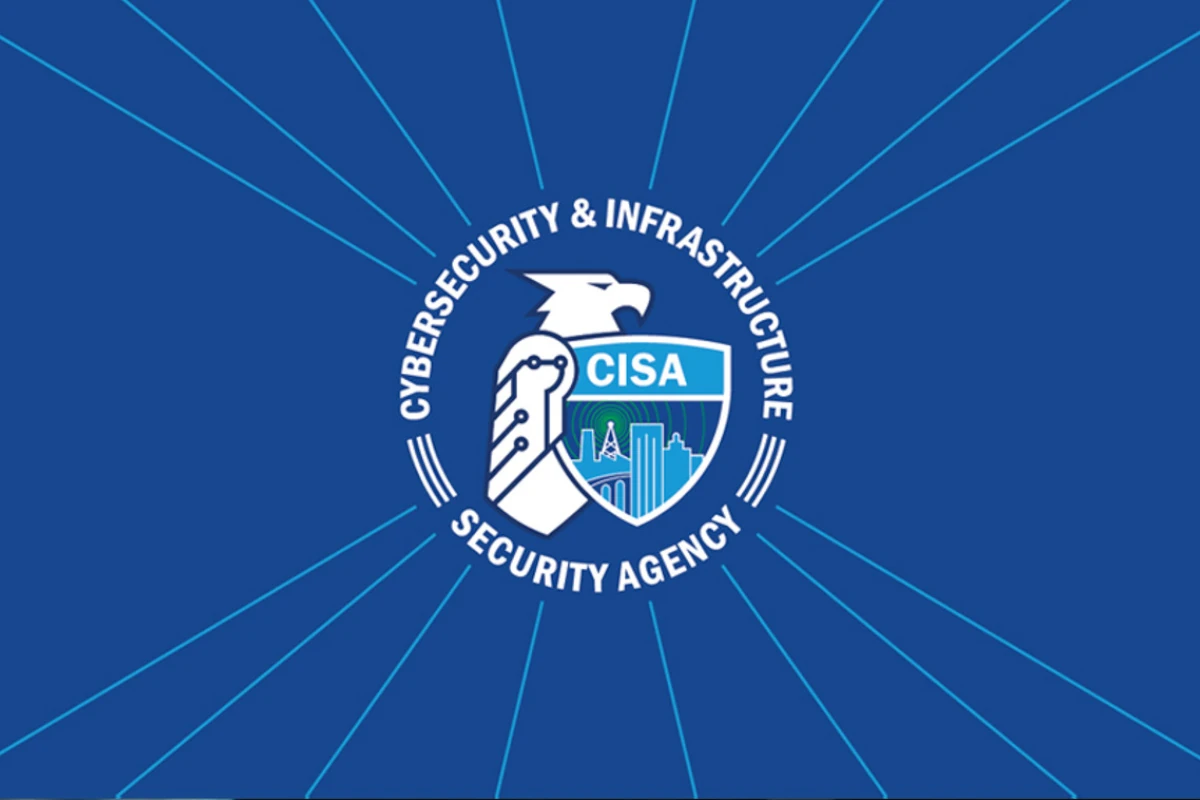In a dramatic turn of events, the U.S. Cybersecurity and Infrastructure Security Agency (CISA) has granted an 11-month extension to the MITRE Corporation to continue operating the Common Vulnerabilities and Exposures (CVE) Program—just hours before the contract was set to expire on April 16, 2025. The move narrowly avoids a potential disruption in one of cybersecurity’s most foundational systems.
What’s at Stake: The Backbone of Vulnerability Tracking
The CVE Program isn’t just a government contract—it’s the global standard for identifying, naming, and cataloging publicly disclosed cybersecurity vulnerabilities. Run by MITRE since 1999, it assigns unique identifiers (CVEs) to known software and hardware flaws. These identifiers form the bedrock for everything from security advisories and penetration tests to SIEM systems, patch management tools, and vulnerability scanners used by Fortune 500 companies and open-source projects alike.
Had the contract lapsed, vulnerability coordination across the cybersecurity landscape could have been thrown into disarray. Without new CVEs, vendors might delay public disclosure of flaws, researchers would lack standardized references, and automated systems designed to flag and fix weaknesses would lose accuracy.
MITRE’s Warning and Industry-Wide Shockwaves
MITRE had warned of the funding cliff weeks in advance, sounding alarm bells that the entire CVE database and its operations could go dark. Security professionals and vendors scrambled to assess the potential fallout. Concerns ranged from delays in patching newly discovered flaws to confusion in communicating risk across organizations.
The potential loss of the CVE Program also raised questions about systemic weaknesses in how essential cybersecurity infrastructure is funded and governed. The irony wasn’t lost on the community: a vulnerability tracking system nearly became a vulnerability itself due to administrative and funding issues.
CISA’s 11-Month Reprieve: A Temporary but Crucial Step
CISA’s announcement provided a collective sigh of relief. “The CVE Program is invaluable to the cyber community and a priority of CISA,” the agency stated, emphasizing its commitment to the program’s uninterrupted operation. The extension grants MITRE nearly a year of breathing room to continue issuing CVEs while a longer-term solution is developed.
But the stopgap nature of this decision raises broader concerns. Should such a critical piece of global cybersecurity infrastructure be dependent on year-to-year contract renewals?
Enter the CVE Foundation: A Push Toward Independence
Amid the uncertainty, several members of the CVE Board moved swiftly to establish the CVE Foundation—an independent nonprofit aimed at providing long-term governance and funding stability. This new entity is expected to collaborate with industry stakeholders, government agencies, and international partners to ensure the CVE Program remains resilient, vendor-neutral, and globally accessible.
The foundation could eventually take over operational responsibilities from MITRE or manage key elements in a hybrid model, shifting the CVE system toward a more community-driven governance model, similar to open standards organizations like the W3C or the Internet Engineering Task Force (IETF).
A Wake-Up Call for the Cybersecurity Ecosystem
The near-expiration of the CVE contract has sparked broader discussions about the sustainability of other critical security tools and public goods. Many vital elements of internet and software security—including open-source libraries, cryptographic protocols, and security feeds—are maintained by a patchwork of nonprofits, volunteers, and small teams.
If CVE can nearly go dark, what else is at risk?
Looking Ahead
With the CVE Program now on borrowed time, the focus shifts to long-term solutions. Stakeholders across the private sector, academia, and government will need to coordinate to ensure the foundation has the support it needs to succeed. CISA’s extension is a crucial win—but it’s only a temporary fix.
For now, vulnerability management systems will continue to receive their lifeblood. But the CVE scare serves as a stark reminder that even the most widely used security tools can become single points of failure—unless the community treats them with the same urgency and investment we give to the threats they’re designed to fight.
Overview of the CVE Program
The Common Vulnerabilities and Exposures (CVE) program serves as a cornerstone of global cybersecurity infrastructure, providing standardized identification for security vulnerabilities across software and hardware systems. Established in 1999, the program has become essential for organizations to track, prioritize, and address security threats.
Purpose and Functionality of CVE
The CVE program creates a standardized method for identifying and categorizing cybersecurity vulnerabilities found in software and hardware systems. Each vulnerability receives a unique CVE ID (like CVE-2023-12345), which helps security professionals track specific issues across different platforms and tools.
These identifiers function as a universal “dictionary” for security issues, enabling clear communication about vulnerabilities between diverse organizations and security tools. CVE entries contain technical details, severity ratings, and potential impact information.
The system feeds into the National Vulnerability Database (NVD) maintained by the National Institute of Standards and Technology (NIST), which adds additional analysis and severity scoring. This standardization helps organizations prioritize patching efforts and allocate security resources effectively.
Security teams worldwide rely on CVE identifiers to manage vulnerability remediation workflows and ensure critical patches are applied promptly.
MITRE’s Role in Managing CVE
MITRE Corporation, a not-for-profit organization, has operated the CVE program since its inception in 1999. They maintain the central CVE List and coordinate the assignment of unique identifiers to newly discovered vulnerabilities.
MITRE works with a network of CVE Numbering Authorities (CNAs) – trusted organizations that can assign CVE IDs to vulnerabilities within their scope. Major technology companies like Microsoft, Google, and Apple serve as CNAs for their products.
The organization also develops and enforces the standards for CVE entries, ensuring consistency and quality across all recorded vulnerabilities. This work requires significant technical expertise and infrastructure.
MITRE’s 25-year management of the program has been funded through federal contracts, with the current contract now set to expire on April 16, 2025.
Partnership with the Department of Homeland Security
The Department of Homeland Security (DHS) has been the primary funding source for the CVE program through its Cybersecurity and Infrastructure Security Agency (CISA) and previously through the National Cyber Security Division.
This federal partnership provides the financial foundation that enables MITRE to operate the CVE program as a free public resource for the global cybersecurity community. The annual contract typically ensures continuous operation of this critical infrastructure.
DHS involvement reflects the program’s importance to national security, as standardized vulnerability tracking helps protect critical infrastructure and government systems. The partnership also facilitates information sharing between public and private sectors.
Recent warnings from MITRE indicate that DHS has not yet renewed the contract for the upcoming fiscal period, creating uncertainty about the program’s future operation. Without this funding, the program that helps engineers identify vulnerability severity and prioritize security patches faces potential disruption.
Implications of the Contract Expiry
The expiration of MITRE’s contract to manage the CVE program creates far-reaching consequences for global cybersecurity operations, vulnerability management processes, and critical infrastructure protection.
Impact on Cybersecurity and National Security
The CVE program serves as a cornerstone of national cybersecurity infrastructure. Without proper funding, there will likely be a deterioration of national vulnerability databases and advisories, creating significant gaps in cyber defense capabilities. This disruption threatens the security posture of government agencies, military systems, and critical infrastructure.
The standardized identification system that CVE provides helps security teams prioritize patches and fixes across networks. When this system falters, vulnerable systems remain exposed longer, creating expanded attack surfaces for adversaries.
Critical infrastructure sectors like energy, healthcare, and transportation rely on timely CVE notifications to maintain security. Delays in vulnerability reporting could lead to cascading failures if these sectors become compromised through previously documented vulnerabilities.
The Cybersecurity and Infrastructure Security Agency (CISA) depends on CVE data for many of its alert systems and advisory functions. Degradation of this capability could hamper national security response mechanisms.
Challenges in Vulnerability Management
Organizations worldwide face immediate operational challenges without a functioning CVE program. The global scale of impact means security teams will struggle to identify, prioritize, and remediate vulnerabilities effectively.
Software vendors typically reference CVE identifiers in security bulletins and patches. Without this standardized system, compatibility issues may arise between security tools and vulnerability scanning processes.
Key vulnerability management tasks affected include:
- Systematic identification of new threats
- Consistent classification of vulnerability severity
- Coordinated response to emerging exploits
- Cross-organizational communication about security issues
The ripple effect will slow vendor reactions to newly discovered vulnerabilities, as noted in MITRE’s warning. This creates longer windows of exposure for organizations of all sizes.
Concerns Within the Cybersecurity Community
Security professionals have expressed alarm at the potential collapse of this critical program. The leaked internal memo confirming the April 16, 2025 expiration date has triggered widespread concern about the future of coordinated vulnerability management.
Industry experts warn that without the CVE program, the cybersecurity landscape could become fragmented. Organizations might develop proprietary vulnerability tracking systems, reducing collaboration and information sharing across the sector.
Cyber threat intelligence sharing depends heavily on standardized vulnerability identifiers. The absence of CVE IDs would complicate attribution and analysis of threat actor behaviors and techniques.
Security researchers and ethical hackers rely on the CVE program to responsibly disclose vulnerabilities. Without this framework, the community risks losing the structured approach that has helped protect systems before vulnerabilities are exploited.
Potential Consequences for Stakeholders
The expiration of MITRE’s CVE program funding will create significant disruptions across multiple sectors. Security teams may face challenges in tracking, communicating, and addressing vulnerabilities without this standardized system.
Effects on Technology Companies
Major tech companies like Microsoft, Google, and Intel rely heavily on the CVE system to manage their security response processes. Without consistent CVE identifiers, these companies may struggle to track and address vulnerabilities in their products.
Software vendors use CVE IDs to communicate security patches to customers. The deterioration of national vulnerability databases could lead to slower vendor reactions and incomplete security updates.
Many automated security tools depend on CVE references to function properly. The absence of new CVE assignments may break existing vulnerability management workflows.
Intel and other hardware manufacturers might face challenges coordinating responses to complex supply chain vulnerabilities that require industry-wide cooperation. Security patches could become harder to reference and track without standardized identifiers.
Government and Public Sector Ramifications
Government agencies depend on CVE identifiers to track threats to critical infrastructure. The Department of Homeland Security may need to establish emergency measures as CISA urgently works to mitigate impact.
Federal systems that automatically ingest CVE data could face disruption. This may hamper incident response capabilities at a national level during critical security events.
Critical infrastructure protection efforts might be compromised without standardized vulnerability tracking. Power grids, water systems, and transportation networks could face increased security risks without proper vulnerability coordination.
Security advisories from government agencies may become less effective or timely. This poses additional challenges for public sector organizations that rely on these alerts.
Private Sector and General Public Outcomes
Companies outside the tech industry face significant uncertainty in managing their security programs. Without CVE identifiers, it becomes harder to prioritize which vulnerabilities need immediate attention.
Security tools used by businesses might become less effective, increasing risk exposure. Vulnerability scanners and management platforms typically rely on CVE data to identify problems.
The general public could experience increased cybersecurity threats as coordination between security professionals diminishes. Consumer devices and services might receive delayed security updates.
If confusion ensues until someone picks up the flag, everyday users may not realize the impact until security incidents increase in frequency or severity. This creates a dangerous gap in the security ecosystem that affects everyone relying on digital systems.
Funding Models and Future of CVE
The expiration of MITRE’s contract raises critical questions about sustainable funding for the CVE program and the potential roles different agencies might play in its continuation.
Exploring Alternative Funding Options
The 25-year-old Common Vulnerabilities and Exposures program now faces a critical juncture in its funding model. Without continued Department of Homeland Security support, several alternate funding structures are being considered.
Industry experts have proposed a consortium model where major technology companies contribute to maintain this critical cybersecurity infrastructure. This approach would distribute financial responsibility across the private sector beneficiaries.
Another possibility includes a hybrid public-private partnership where government provides baseline funding supplemented by corporate contributions. This model could balance stability with stakeholder input.
Some cybersecurity professionals have suggested integrating the CVE program with the Common Weakness Enumeration (CWE) framework under a unified funding structure. This consolidation might create efficiencies while maintaining the distinct functions of both systems.
The Role of CISA and DHS in Transition
The Cybersecurity and Infrastructure Security Agency (CISA) has historically played a crucial role in supporting the CVE program through DHS funding channels. Their expertise makes them natural candidates to guide any transition.
MITRE’s vice president Yosry Barsoum warned about the funding expiration in a letter highlighting the urgent need for resolution. Without immediate action, tens of thousands of vulnerability tracking records could lose their coordinated management.
The DHS must determine whether to:
- Extend emergency funding
- Transfer program oversight to another agency
- Create a new operational model
CISA officials have indicated they recognize the national security implications of the CVE program’s potential lapse. They are reportedly developing contingency plans to ensure continuity of this vital cybersecurity resource during any transition period.
Frequently Asked Questions
The current CVE contract situation raises several important concerns for cybersecurity professionals and organizations worldwide. The expiration threatens a critical system that has become fundamental to vulnerability management across the industry.
What are the implications for cybersecurity if the MITRE CVE program is not renewed?
If the MITRE CVE program is not renewed, no new CVEs will be added to the program and the CVE website will eventually go offline. This creates an immediate gap in vulnerability tracking and coordination.
Security teams rely on CVE identifiers to prioritize patching and mitigation efforts. Without this standardized system, organizations may struggle to effectively communicate about threats and vulnerabilities.
The lack of a central vulnerability database could lead to fragmented security responses across industries. Cybersecurity professionals might need to create alternative systems for tracking vulnerabilities, potentially causing confusion and inconsistency.
How has the Department of Homeland Security’s funding historically supported the CVE program?
The Department of Homeland Security has been the primary funding source for MITRE’s CVE program throughout its 25-year history. This federal backing has allowed the program to operate as a free, public resource accessible to security professionals worldwide.
DHS funding has enabled MITRE to maintain the infrastructure necessary for cataloging and distributing vulnerability information. The partnership between DHS and MITRE has been central to establishing CVE as the global standard for vulnerability identification.
The federal contract has supported the program’s expansion from a small catalog to a comprehensive system with tens of thousands of documented vulnerabilities.
What potential organizations could take over the CVE program maintenance after MITRE?
Several organizations with established cybersecurity credentials could potentially step in to maintain the CVE program. These include other federally funded research and development centers with similar technical capabilities to MITRE.
Private sector cybersecurity firms with existing vulnerability research programs might also be candidates. Industry consortiums formed specifically to preserve this critical infrastructure could emerge from the current uncertainty.
International standards organizations with experience in cybersecurity frameworks might also be positioned to adopt the program. However, any transition would require significant coordination to maintain the program’s integrity.
How does the CVE program contribute to national and international cyber defense strategies?
The CVE program serves as a cornerstone for both national and international cyber defense by providing a standardized vulnerability identification system. This common language allows security professionals across borders to coordinate responses to threats.
Government agencies rely on CVE data to assess threats to critical infrastructure and guide security policies. The program helps engineers identify how severe an exploit is and prioritize applying patches.
International cybersecurity cooperation depends on shared vulnerability information that the CVE program facilitates. This global resource has become an essential component of defense strategies that cross organizational and national boundaries.
What measures are in place to ensure continuity of the CVE program in the event of a contract termination?
MITRE has issued warnings about the impending contract expiration, but specific continuity plans have not been clearly communicated. The cybersecurity community is concerned about the apparent lack of transition arrangements.
The program’s existing database will likely remain accessible for some time after funding lapses, but without updates, it will quickly become outdated. Industry stakeholders are discussing emergency measures to preserve access to this critical resource.
Some private sector initiatives may emerge to temporarily maintain aspects of the CVE system until a permanent solution is established. However, these efforts cannot fully replace the coordinated federal program without significant support.
What have been the major accomplishments of the CVE program under MITRE’s stewardship?
Under MITRE’s management, the CVE program has successfully identified, defined, and cataloged publicly disclosed cybersecurity vulnerabilities for 25 years. This consistent record-keeping has been vital for the entire industry.
The program established the standard vulnerability naming convention now used globally by security professionals. This standardization has improved communication and coordination across organizations, vendors, and security researchers.
MITRE has expanded the CVE system from a small project to a comprehensive program that covers virtually all major software and hardware platforms. The program’s growth reflects its successful adaptation to the rapidly evolving cybersecurity landscape.







